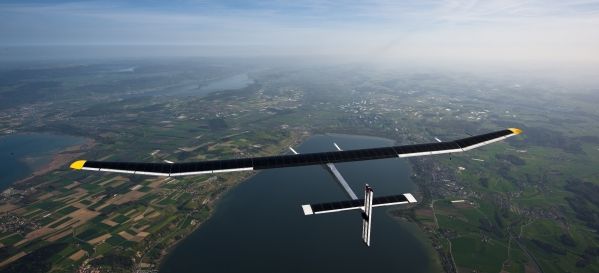Payern, Svizzera. Alle 6.40 GMT di questa mattina si è alzato in volo per compiere il primo volo internazionale l’aeroplano del futuro, alimentato da energia solare. Pilotato da Andre Borschberg, il prototipo dell’aeroplano-libellula è decollato oggi dall’aeroporto di Payern, in Svizzera, con destino Bruxelles. L’aeroplano ad impulso solare HB-SIA effettuò il suo primo volo sperimentale sopra i cieli della Svizzera già lo scorso giugno 2010 ma quella di oggi è la prima rotta internazionale dell’aeroplano verde.
L’efficienza di questo velivolo non ha paragoni con i normali aeromobili, ha un’autonomia di più di 26 ore ed ha raggiunto un record d’altitudine, volando a 9.235 metri. Tra il 2013 ed il 2014, il team svizzero ha in programma di costruire velivoli ad impulso solare leggermente più larghi di quello che si è alzato in volo oggi, con l’obiettivo d’effettuare voli su rotte transamericane e transatlantiche.
L’aereo Solar Impulse di nuova generazione è alimentato da 12mila celle fotovoltaiche distribuite lungo un’apertura alare di 64 metri. Rimarrà in esposizione nell’aeroporto di Bruxelles fino al 29 Maggio e dal 20 al 26 giugno parteciperà al Le Bourget Air Show, a Parigi.
“Far volare un aeroplano ad impulso solare nei cieli internazionali dell’Europa è un’incredibile sfida per il nostro team ed il successo dipenderà dal supporto che riceveremo da parte di tutte le autorità competenti” – ha affermato il co-fondatore del progetto Andre Borschberg.
“Questo aeroplano – ha detto Bertrand Piccard, fondatore e presidente del progetto Solar Impulse – è la prova di come possiamo ridurre la nostra dipendenza dall’energia fossile. Il Solar Impulse ha una grande ambizione, quella di essere il primo velivolo capace di compiere un volo perpetuo. In futuro aeroplani come questi voleranno attorno al mondo senza nessuna necessità d’essere riforniti di carburante, alimentati solo dall’energia solare”.
Matteo Vitiello
Come funziona il Solar Impulse

Wingspan: 63.40m; Length: 21.85m; Height: 6.40m; Motor power: 4 x 10hp electric engine; Solar cells: 11,628; Average speed: 70km/h; Maximum altitude: 27,900ft (8,500m); Weight: 1,600kg; Take-off speed: 35km/h











![Peter Brabeck, Nestlé: l’acqua non è un diritto delle persone e va privatizzata [INTERVISTA]](https://buenobuonogood.com/wp-content/uploads/2014/09/b11774983a84b6798031fb71a3fe8b90-1-218x150.jpg)
![Tutto il sottosuolo della Basilicata è inzuppato di petrolio [VIDEO]](https://buenobuonogood.com/wp-content/uploads/2014/10/petrolio-basilicata-218x150.jpg)





















